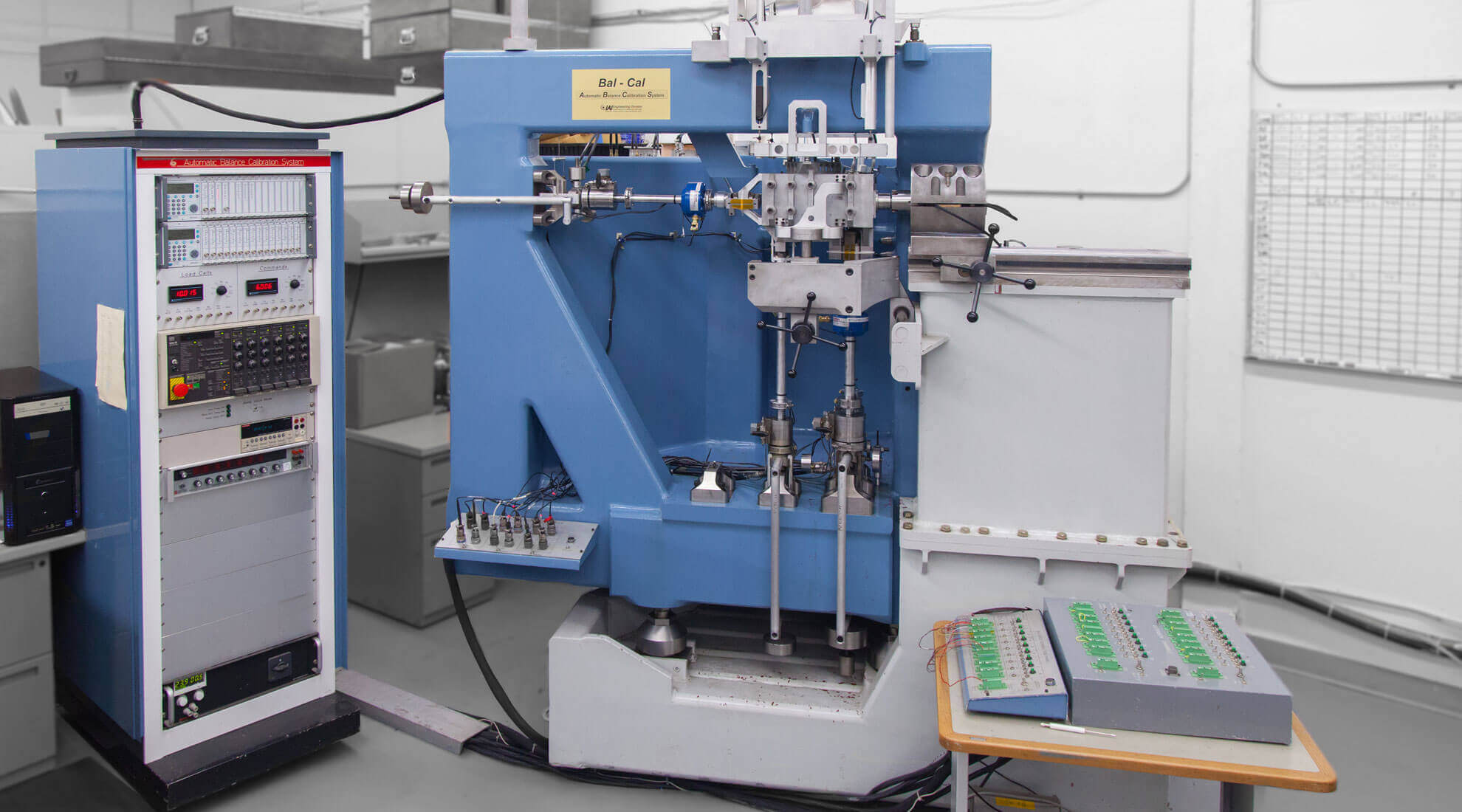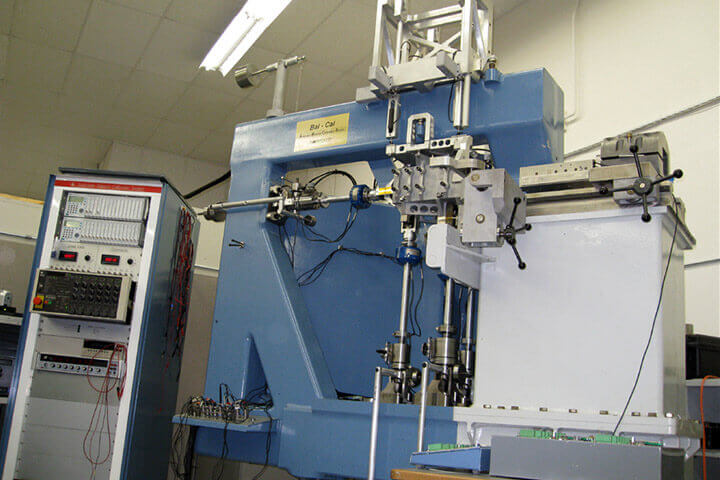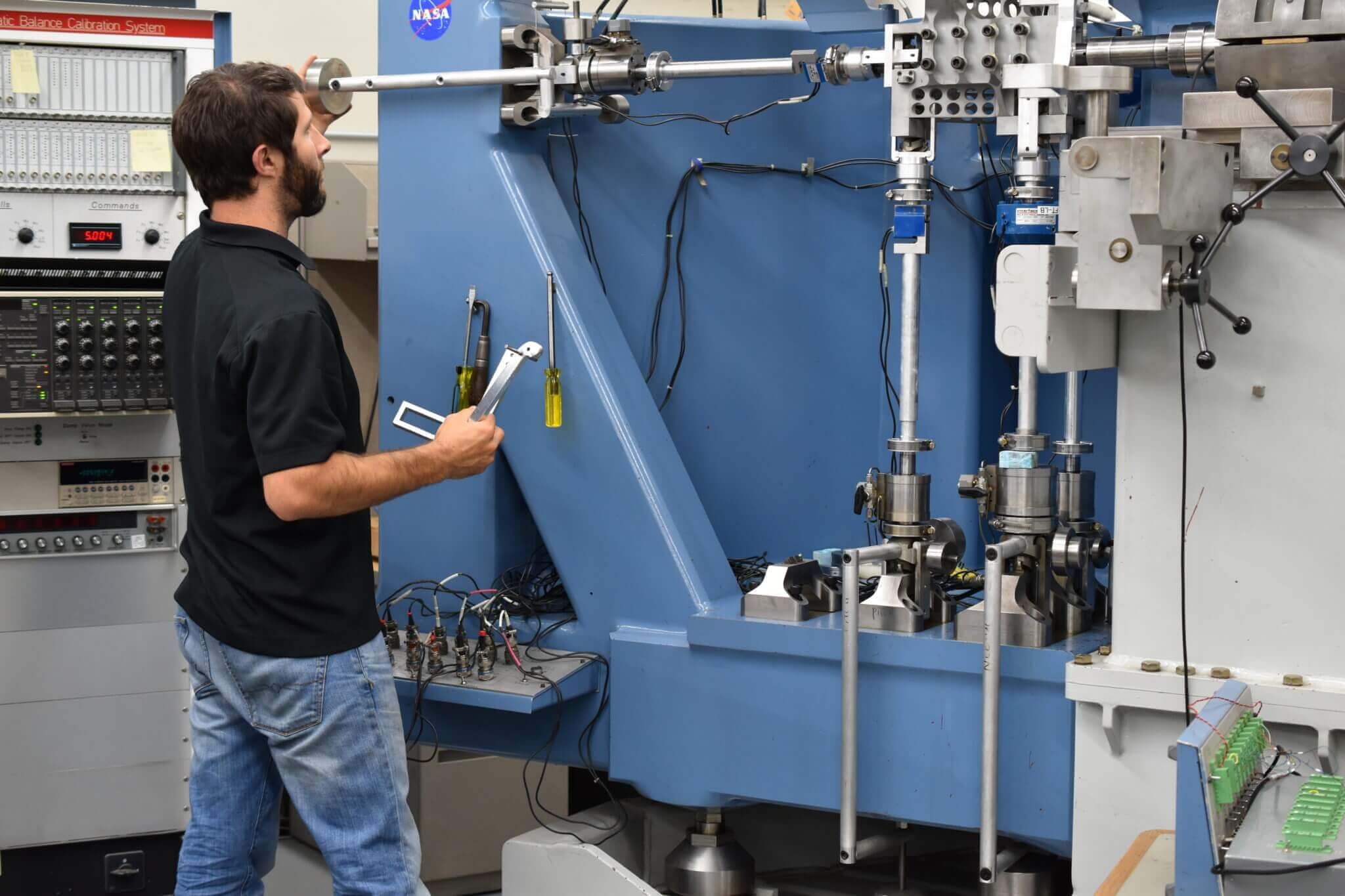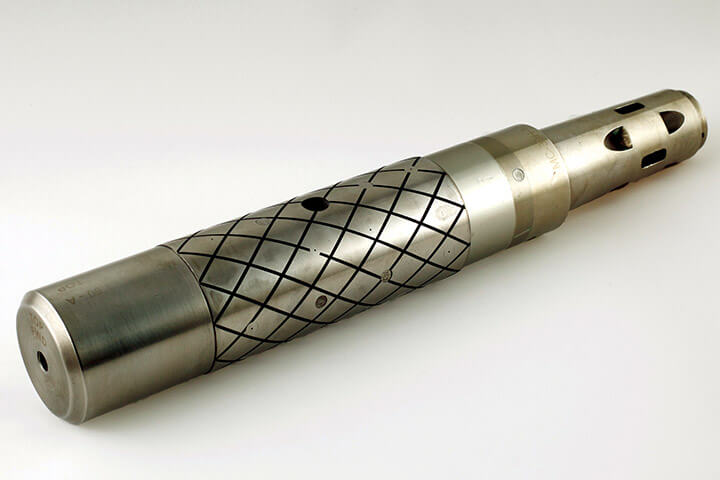Balance Calibration

Balance Calibration
Balances may be calibrated either via a manual calibration process or by using the Automatic Balance Calibration System (ABCS); this is the only machine of its type located in the United States. The ABCS uses load cells, hydraulic actuators, and a computer control and data acquisition / reduction program to automatically generate an extensive balance calibration. It is capable of simultaneously loading all six balance components to obtain a third-order, 6 X 96 balance calibration matrix that is more representative of actual in-test load conditions than a calibration produced by manual loading. The unique ability of the ABCS to apply any combination of loads allows it to apply any calibration load schedule, which includes six component wind tunnel test load combinations to validate the performance of the balance in actual test type conditions. The ABCS data system has 25 balance channels available.
ABCS Calibration
Our Automatic Balance Calibration System (ABCS) machine is uniquely capable and efficient. We can produce Full Six Component combined loading calibrations accurately and efficiently.

Many Calibration Stands
We have a wide variety of calibration stands covering small to large load applications, manual to automatic calibration services.

Force Measurement Experts
Talk to us about your force measurement calibration needs. Our experts are ready to help you define a calibration approach that best meets your experimental goals.

Manual Calibration
Our calibration lab has several independent calibration rigs; loads can be applied through dead weight and hydraulics, up to 100,000 lb. We have integrated data acquisition systems and computerized calibration matrix reduction. The rigs can apply single component or combinations of 3 forces and 3 moments to the balance. Calibration hardware can be provided for end users to maintain the accuracy of delivered balance systems. Calibration equipment is fabricated to exacting tolerances.
Large Load Rig (LLR)
Originally designed to calibrate large Semi-Span balances, the Large Load Rig applies load to the balance via hydraulic actuators linked to precision load cells with flexures on each end of the load chain. The loads are applied in sequence per the load schedule that is selected in the operator’s program.
The load condition is maintained within a close set tolerance level. The balance and each axis are manually realigned to an orthogonal position for each load prior to taking the data point. The load cells and flexures are changed to match the load range of the balance, by matching the load range for each balance the machine is able to provide increased resolution and accuracy for a wide range of balances and instrumented stings.
The versatility of the system was demonstrated when a torque tube was calibrated to very demanding loads: 800,000 in-lb of torque along with 200 lbs of thrust.